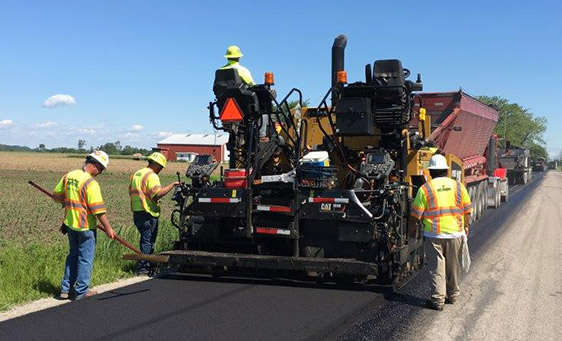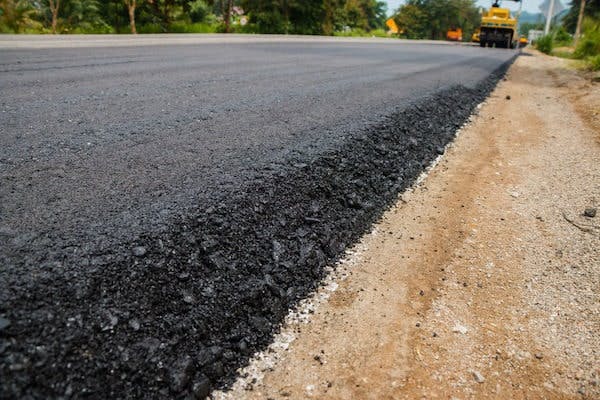Hot Mix Asphalt Paving: Redefining Industrial Residential Or Commercial Property Landscapes
Hot Mix Asphalt Paving: Redefining Industrial Residential Or Commercial Property Landscapes
Blog Article
Opening the Secrets of Hot Mix Asphalt Modern Technology
Checking out the midsts of warm mix asphalt technology uncovers a globe where accurate formulas and careful procedures merge to shape our roadways and framework. The combination of binders, accumulations, and fillers isn't simply a construction job however a tactical orchestration of durability and efficiency. As we peer into the elaborate dancing of parts, a tapestry of durability and sustainability unravels. However what exists beneath this surface area of asphaltic proficiency, and what tricks wait to be unveiled in the world of paving technologies?
Value of Hot Mix Asphalt
Hot Mix Asphalt plays a crucial role in modern framework development due to its durability and cost-effectiveness. As the most generally utilized leading material for roadways, freeways, and vehicle parking great deals, Hot Mix Asphalt uses a variety of advantages that contribute to its relevance in building jobs.
The longevity of Warm Mix Asphalt stems from its composition, which consists of aggregates, binder, and filler materials that are carefully picked and blended to satisfy certain efficiency demands. This precise mix results in a versatile and solid pavement that can sustain regular use without significant wear and tear. Hot Mix Asphalt is 100% recyclable, further boosting its sustainability and ecological benefits. Generally, the importance of Warm Mix Asphalt in framework growth can not be downplayed, as it continues to be a keystone of modern-day building practices.
Elements of Asphalt Mixes
The composition of asphalt blends consists of carefully picked accumulations, binder, and filler materials that are crucial for attaining details performance requirements. Accumulations are the main element of asphalt blends, providing stamina and security. The binder, generally bitumen or asphalt cement, holds the aggregates together and supplies versatility and toughness to the mix.
The combination and proportion of these components play a significant duty in establishing the high quality and efficiency of the asphalt mix. Designers meticulously create the mix to fulfill particular needs, taking into consideration aspects like traffic quantity, environment conditions, and pavement lifespan. Correct selection and balancing of accumulations, binder, and fillers are essential for producing durable, durable asphalt pavements.
Combining and Manufacturing Methods

As soon as the accumulations are picked, the binder, commonly asphalt concrete, is added to bind the materials together. The binder's quality and quantity significantly influence the mix's adaptability, toughness, and resistance to ecological factors. In addition, fillers like hydrated lime or Portland concrete might be included to improve details characteristics of the asphalt mix, such as its workability or moisture resistance.
During manufacturing, the aggregates and binder are warmed, commonly between 250-325 ° F(121-163 ° C ), to promote blending and make sure correct finish of the accumulations. The blending procedure should be detailed to attain a homogeneous combination that advertises the wanted performance attributes of the asphalt. Various techniques, such as set blending or drum mixing, are employed to accomplish consistent and premium asphalt mixes for building and construction jobs.
Factors Influencing Asphalt Performance
Elements affecting asphalt efficiency encompass view it a variety of variables that affect the durability, long life, and overall high quality of asphalt sidewalks. One key element is the high quality of products made use of in the asphalt mix.

Environmental conditions also influence asphalt performance. Temperature variations, moisture infiltration, and traffic loads can all affect the structural stability of the sidewalk. Style factors to consider, such as sidewalk thickness and drain, are necessary in guaranteeing the lasting performance of the asphalt pavement. By very carefully taking into consideration these variables, engineers and professionals can maximize asphalt efficiency and enhance the service life of sidewalks.
Sustainable Practices in Asphalt Innovation

WMA permits for the production and positioning of asphalt blends at lower temperature levels compared to conventional hot-mix asphalt, resulting in lowered energy intake and greenhouse gas emissions. The use of permeable asphalt blends can help alleviate stormwater runoff problems by permitting water to infiltrate with the sidewalk and right into the ground, promoting natural water purification and recharge processes.
Verdict
In conclusion, hot mix asphalt technology plays a vital duty in modern-day framework development due to its resilience and cost-effectiveness. By very carefully stabilizing elements, utilizing appropriate blending methods, and thinking about different aspects, designers can produce top notch asphalt mixes that stand up to click here to find out more heavy web traffic loads and severe weather. Embracing sustainable techniques, such as making use of recycled products and warm-mix innovations, further enhances the ecological kindness of asphalt innovation.
Blending and manufacturing methods in hot mix asphalt modern technology entail the exact combination and handling of accumulations, binder, and fillers to create a durable and high-performance asphalt mix.Aspects influencing asphalt efficiency include a range of variables that impact the longevity, durability, and overall top quality of asphalt pavements. Lasting methods in asphalt technology include various campaigns aimed at reducing the ecological impact of asphalt manufacturing and paving processes. By including reclaimed asphalt sidewalk (RAP) and recycled asphalt roof shingles (RAS) right into new asphalt blends, the industry can dramatically decrease the intake of raw materials and power, while also lowering garbage dump waste.
WMA permits for the production and positioning of asphalt mixes at lower temperature levels compared to typical hot-mix asphalt, resulting in decreased power consumption and greenhouse gas discharges.
Report this page